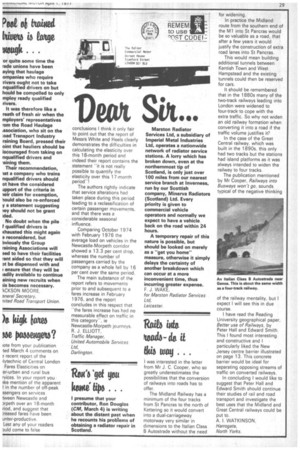ht kigkfoto pameggeta
Page 31

If you've noticed an error in this article please click here to report it so we can fix it.
iote from your publication ted March 4 comments on recent report of the lytechnic of Central London Fares Elasticities on er-urban and rural bus rvices. In your report you 3ke mention of the apparent in the number of off-peak ssengers on services tween Newcastle and )meth over an 18-month Hod, and suggest that :reased fares have been Linter-productive.
Lest any of your readers Duld come to false
conclusions I think it only fair to point out that the report of Messrs White and Heels clearly demonstrates the difficulties in calculating the elasticity over this 18-month period and indeed their report contains the statement -it is not really possible to quantify the elasticity over this 17-month period-I
The authors rightly indicate that service alterations had taken place during this period leading to a reclassification of certain passenger movements, and that there was a considerable seasonal influence.
Comparing October 1974 with February 1 976 the average load on vehicles in the Newcastle-Morpeth corridor showed a 13.3 per cent drop, whereas the number of passengers carried by the company as a whole fell by 16 per cent over the same period.
The main substance of the report refers to movements prior to and subsequent to a fares increase in February 1976, and the report concludes in this respect that the fares increase has had no measurable effect on traffic in this category'', ie Newcastle-Morpeth journeys. R. J. ELLIOTT, Traffic Manager, United Automobile Services Ltd, Darlington.
































































































